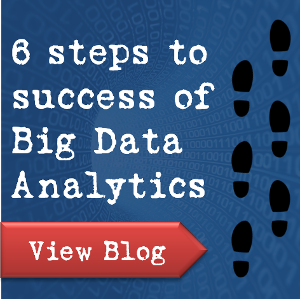Understanding the Scope of Database Activity Monitoring
Published on 30 December 16
1
1
Databases are undeniably the most valuable assets of your organization. No wonder, they are always the prime targets for outside threats. Every database requires constant monitoring and layered protection to avoid loss of sensitive business and financial data. This is where database activity monitoring (DAM) comes into play. As its name suggests, DAM is a means for monitoring applications. They are designed to examine the way applications use data and database resources to comply with user requests. In this blog, we’ll take a look at the scope of database activity monitoring, and what it brings to the table.
How Does the Application Work? 

DAM can be used for capturing and recording database events in real-time. Firmly focused on the database layer, it promotes a contextual understanding of transactions and the way multiple database operations result in a particular business function. Organizations seeking to keep track of administrator actions, such as the viewing of sensitive data or the execution of unauthorized changes, should opt for DAM. One area where DAM excels is detecting odd behavior. For example, when an administrator makes unusual requests or requests access to ‘too much’ information, his/her actions are hard to quantify, but something seems off. DAM can identify such behavior easily.
Process
Database security monitoring is a long process, comprising several components. They include:
> Inventory: An inventory of different databases and the location of sensitive data. Users require processes and methods to maintain the inventories.
> Configuration: Every database requires a measurable standard and baseline along with periodic validation with standard compliance.
> Access: Access involves the management tools, policies, and procedures that comprise database access control. Functions include the monitoring and profiling of database access.
> Auditing: Includes all processes, definitions, and requirements related to database auditing. Helps with centralized auditing retention and reporting solution.
> Monitoring: It is important to monitor the security of your database in real-time and detect intrusions. Utilizes database monitoring tools and definitions.
> Protection: A proper strategy helps protect sensitive data. There are various options available, including data masking, scrambling, encryption, and redaction.
> Vulnerability: Databases require active assessment and management of vulnerabilities through processes and remediation strategies.
By leveraging all these components of database security, DAM offers both quantitative and qualitative analysis of events across different requesting databases and applications. This is the kind of focus that permits DAM to offer value beyond regular intrusion-detection or event management systems and security details.
What make DAM Commercially le Viable?
DAM products are designed in a way so that they can scale with the IT systems they’re tasked with monitoring. There are other factors that contribute to the commercial viability of DAM systems:
> Behavioral Monitoring: DAM systems are well-suited for capturing and recording activity profiles, both of specific database users and generic user accounts. Changes detected in the behavior of a user may indicate a disgruntled employee, oversubscribed permissions, or even hijacked accounts. Worried about mysterious Russian hackers accessing your data and leaking your information? Losing sleep over ‘insider threats’? Behavioral monitoring has got you covered – it detects misuse of any form, irrespective of source.
> SQL Injection Protection: DAM can filter and protect against SQL injections. Though complete prevention isn’t possible, behavioral and statement analysis techniques stem many known and previously unknown attacks. When you whitelist queries from certain applications, database activity monitoring detects most queries originating from unapproved applications and tampered ones. DAM also blocks statements before they’re executed in the database, preventing any damage to the platform or your valuable data.
> Behavioral Monitoring: DAM systems are well-suited for capturing and recording activity profiles, both of specific database users and generic user accounts. Changes detected in the behavior of a user may indicate a disgruntled employee, oversubscribed permissions, or even hijacked accounts. Worried about mysterious Russian hackers accessing your data and leaking your information? Losing sleep over ‘insider threats’? Behavioral monitoring has got you covered – it detects misuse of any form, irrespective of source.
> SQL Injection Protection: DAM can filter and protect against SQL injections. Though complete prevention isn’t possible, behavioral and statement analysis techniques stem many known and previously unknown attacks. When you whitelist queries from certain applications, database activity monitoring detects most queries originating from unapproved applications and tampered ones. DAM also blocks statements before they’re executed in the database, preventing any damage to the platform or your valuable data.
Database activity monitoring has tremendous potential to succeed within the organizational framework. And why not? As an intuitive tool, DAM understands what to monitor, how best to do that, and when to set up scans and alerts, subsequently guaranteeing total health maintenance for your entire database infrastructure. However, it’s important to invest in the right monitoring product for the best business outcome, so research well before implementing a DAM system for your company.
This blog is listed under
Enterprise Applications
, Data & Information Management
, IT Strategy & Management
and IT Compliance & Audit
Community
Related Posts:
You may also be interested in
Share your perspective

Share your achievement or new finding or bring a new tech idea to life. Your IT community is waiting!

 Olivia
Olivia







See also http://www.iri.com/blog/vldb-operations/introduction-damdap/, which recommends ChakraMax (www.iri.com/products/chakramax) for its provision of the listed components at relatively affordable price points, speed in traffic, and lack of impact on the DBs it monitors.